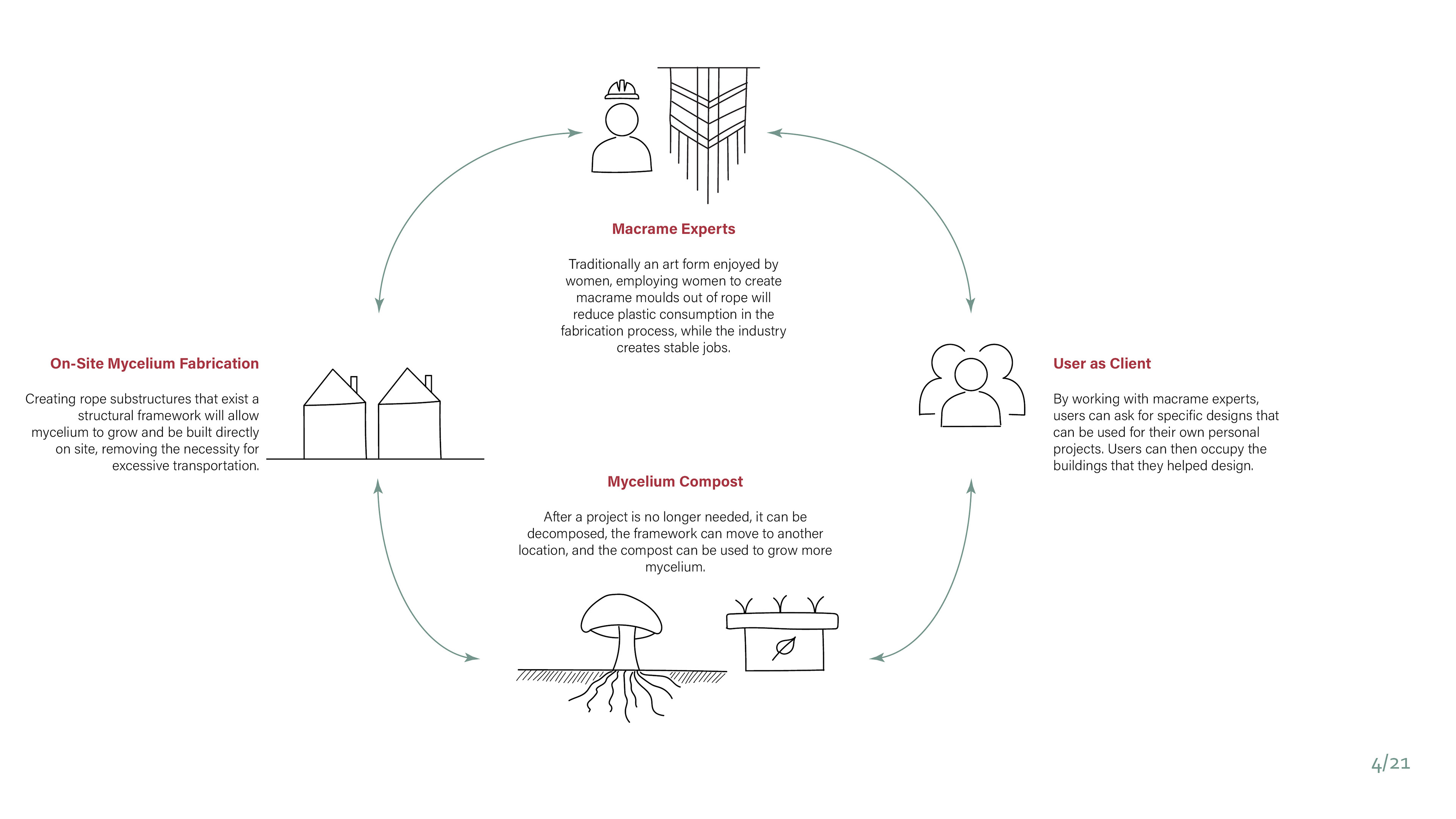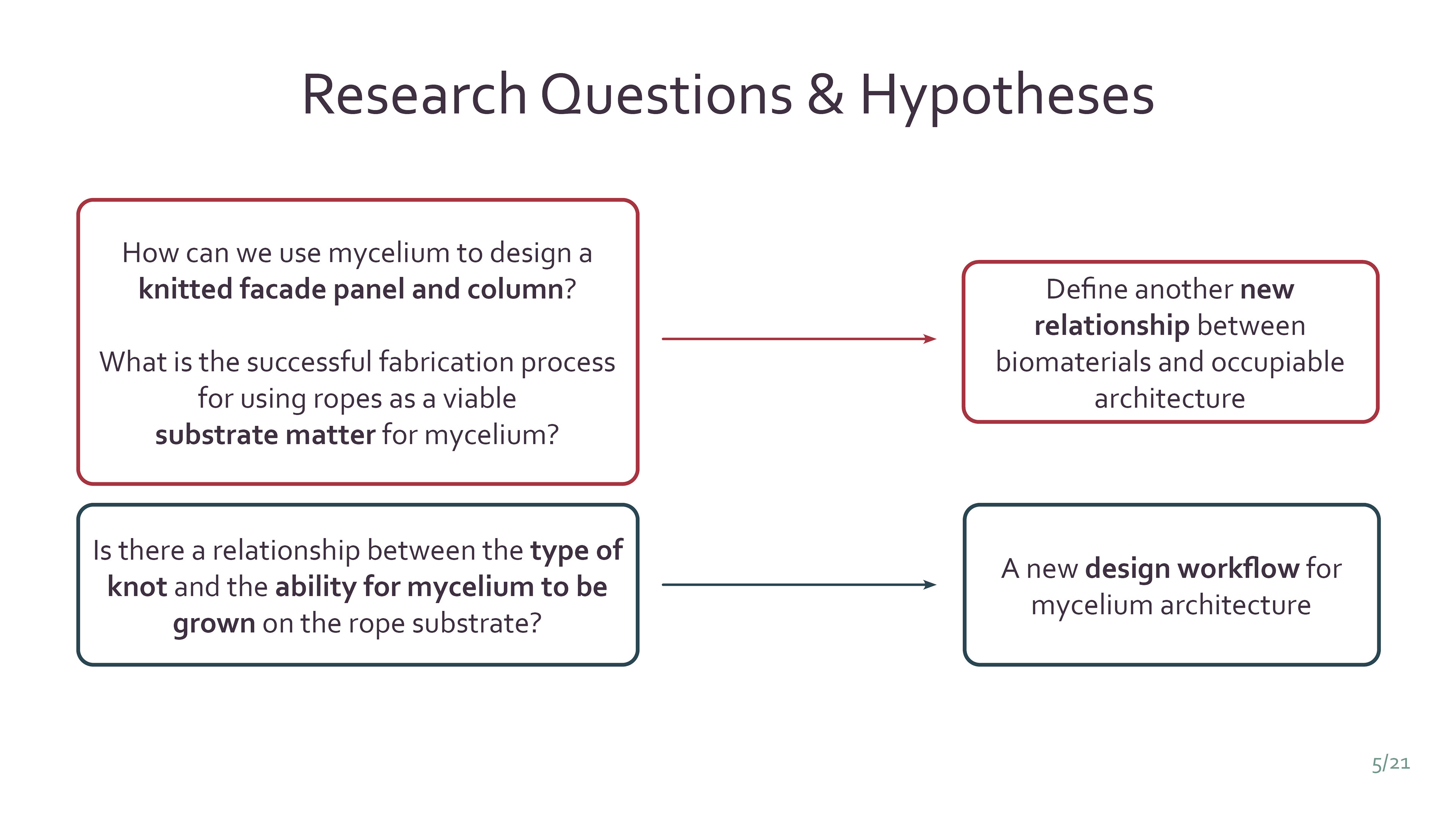








In the United States, the construction industry produces approximately 600 million tons of waste each year, with majority of that waste coming from demolition (US EPA, n.d.). Additionally, the manufacturing of new construction materials uses high levels of nonrenewable fossil fuels and creates high levels of carbon emissions, which can have severe negative impacts on the surrounding environment. Mycelium has the potential to replace traditional building materials and doing so will reduce our carbon footprint and waste from construction site. Currently, we are aware of mycelium's environmental benefits and material characteristics. However, there are very few examples of mycelium being used in buildings that are enclosed and occupiable. This synthesis project will combine short-term structures with mycelium’s advantageous characteristics to create a new type of architectural form. Through design iterations and material explorations, this project will create a new design workflow for organic and biodegradable building materials. When compared to traditional architecture, these new mycelium structures will allow for a reduction in waste and carbon emissions and will provide a unique spatial experience for occupants. This completed design exercise on mycelium structures will help educate designers and building users about the benefits of this material, thus increasing its use in the construction industry to help combat larger issues of climate change through building construction.








